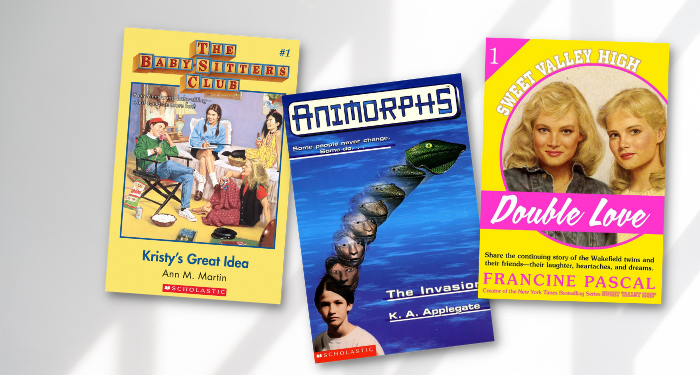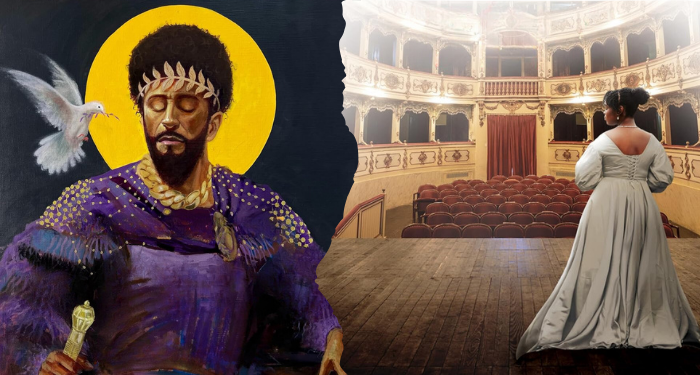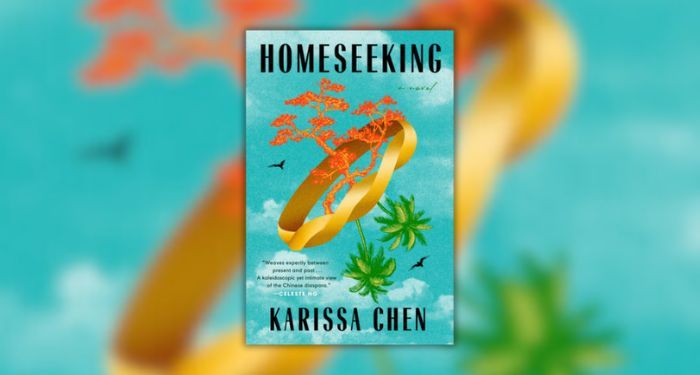Secrets of the Mega Book Series of the ’80s and ’90s

This content contains affiliate links. When you buy through these links, we may earn an affiliate commission.
How many Baby-Sitters Club books did you read? How about Sweet Valley High? Animorphs? Chances are, if you’re in your thirties now, you were familiar with at least one of these hit series of the 1990s and early 2000s. I was never a Sweet Valley gal (though I did dabble in the slightly more mature Sweet Valley High Senior Year series), but I loved a long-running series of the kind that doesn’t seem to really exist anymore. You were never without a book to read when you could expect another one of these to drop each month. How did the authors do it? Magic, right?
Sure. The magic of ghostwriting… which actually is a kind of magic if you get into it.
Most of the time, these works were produced under a condition of relative anonymity. In my decidedly non-expert opinion, this kind of intense series production has died down in recent years. The Thirty-Nine Clues, for example, credited each of its individual authors. It feels like people are more used to waiting longer periods for the newest installment of their favorite series or perhaps that quality is being emphasized over quantity. But if you read any of these long-running series in the ‘90s, maybe you wondered how they came to be.
A lot of the details of ghostwriting is kept quiet because, I don’t know, someone somewhere wants you to think that somewhere there’s a centenarian called Carolyn Keene who is churning out Nancy Drew books. Or that it was physically possible for a single person to write every single Animorphs book in the span of five years. Honestly, from what I’ve learned about the lengths Katherine Applegate went to try to write all of these books herself, I have nothing but respect for her.
I didn’t know why the later Animorphs books sometimes felt different than the earlier ones, but now I understand it was because a different person was writing them. In an amazing Reddit AMA, Applegate wrote on the variable quality of the later books by stating that she and her husband were not skilled editors. (In the early books, K.A. Applegate was both Katherine Applegate and her husband, Michael Grant.)
In this piece, I am focusing on the series I knew best: Animorphs (53 regular series books plus special editions), Fearless (36 books, two special editions, an attempted spin off), The Baby-Sitters’ Club (131 regular books, 15 super specials, 36 mysteries and more spin offs than I have room for here), and the lesser-known horse racing series Thoroughbred (which finished with 72 regular books plus special editions). Unfortunately, like most of the hit books of the ’90s, there weren’t a lot of authors of color getting picked up for long-running series at that time.
How did these mega series work?
An article on ESPN of all places, recently really took me down memory lane. The author, Amanda Duckworth, managed to connect with Joanna Campbell (also known as Jo Ann Simon), who had the idea for and wrote the first 14 Thoroughbred books and revealed a lot about the process of getting those books made. She was approached by the publisher after writing other books about horses and girls. She did not have actual American horse racing expertise, but got deeply into the research. She stopped writing the series after book 14 because she was expected to produce four books per year and was burnt out on the process. This seems to be a common reason why ongoing series like this end up with ghostwriters. As of a couple of years ago, she still owned half the copyright to the series, which is an interesting predicament to be in and is also why other book series end up in limbo.
The ghostwriter would usually be mentioned in the acknowledgements (in Animorphs, this person is usually credited for assisting with the preparation of the manuscript). Often, they would work from an outline. Maintaining continuity was a challenge, and many series would have a “series Bible.” The Baby-Sitters Club series Bible was constructed by none other than YA juggernaut David Levithan early in his career at Scholastic. Sweet Valley High also had a similar document, prepared by Francine Pascal, who never intended to write the books.
Ghostwriters: Not Who You’d Think
Ghostwriters become good at writing to set word counts and under tight deadlines. Generally, a prospective ghostwriter would be asked to produce sample chapters, though at least one of Francine Pascal’s longtime Sweet Valley ghostwriters fell into the opportunity when she met her at a dinner party. She wrote a sample chapter and got the job. She wrote “more or less” every other book in the series while getting her Ph.D. in English literature. Other ghostwriters had publishers reach out after they’d published stories in magazines such as Seventeen.
One of the most prolific ghostwriters of the Baby-Sitters Club series was Peter Lerangis, who also wrote for Sweet Valley. In an interview, he discussed how Ann M. Martin remained involved with the series all the way through, which was how the quality remained consistent. (I could not find out how closely Pascal kept to the source material of Sweet Valley or, later, Fearless but I do remember that some of those later Fearless books were weird.)
Katherine Applegate herself also wrote for Sweet Valley, commenting in an informative and hilarious Reddit AMA that she “gave Jessica Wakefield her first period, assholes!” Sweet Valley really seemed like the place to get your feet wet in publishing in the 1990s. Some ghostwriters also went on to pitch their own series in which they worked with, you guessed it, more ghostwriters. I discovered that one of the Animorphs ghostwriters, Melinda Metz, went on to write the mostly-forgotten-but-never-by-me Fingerprints series.
Unsurprisingly, ghost writers are also often widely published as themselves, including in “serious” journals. This shouldn’t be surprising, because if you can follow someone’s tone and style so exactly that people can’t identify you…why wouldn’t you be a master of your own? It takes some serious skills to play in someone else’s world. It does not receive the kind of respect I feel like it should as a profession.
What is the Sweet Valley High of today? I say this entirely without proof, but I feel as though the expectation for literature for young people has changed since the days of my beloved series novels. YA and middle grade books have, in some sense, been “elevated” (it’s a National Book Award category and has been since 1996), and so perhaps there is less of a place for the snacky teen series. I am glad that the publishing industry has improved in many ways, including children’s books becoming more diverse, but I mourn the loss of these mega series. I feel lucky to have had a chance to grow up with the Animorphs, and with Gaia Moore of Fearless, and with Kristy Thomas and the gang.






